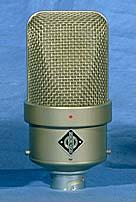

There was a period at the beginning of digital recording when several "golden ears" record groups attempted to record everything with no EQ in order to get a pure sound. What they discovered was that their recordings sounded "boxy" and lacked a certain shimmer, by comparison to other recordings. There are several reasons that, even with excellent mics, you can end up with this: 1) All your instruments could be prevalently midrangy, 2) You are recording with a mic which doesn't "hype" or exaggerate the high-end (this is a good thing), 3) You could be recording with the Mic so close to the instrument that the lows and low-mids are being emphasized... and recording that close can also give a harsh sound, 4) Your room could be too ambient or small enough that it reinforces standing waves within the bandwidth of your instrument.
Here's a philosophy you might want to adopt: All recordings are representations of the sounds they are recording. No recordings are exact reproductions of the sounds they are recording. There are just too many environmental and electronic obstacles to accomplish that. While we can attempt to be as natural as possible (and I do), we also need to do what we can with our tools to make a pretty, musical-sounding recording to appeal to the ear of the listener.
After years of listening to pop recordings, most of us want some high end. Try the following, one at a time, on test recordings to see if they help:
1) Move your Mic out. Some engineers call this allowing the instrument to breathe. When I record the guitar, my first Mic'ing position I try is facing the front of the guitar at the neck/body joint, about 12-18" away. If you get too close to the guitar or if you Mic at the soundhole, you can get all kinds of brash overtones and/or a aboxy sound.
2) Roll off some bass. Using a high-pass filter, roll off everything below 60 Hz. Does that add clarity?
3) Add some highs: Using a shelving EQ, add a few dB somewhere between 7.5 kHz and 10 kHz. If done gently, this can add shimmer.
4) In the mix stage, if you have lots of midrangy instruments and it ends up sounding boxy, you may want to gently notch out the mids on background instruments.
5) With flute, don't get too close or you will get that Ian Anderson (Jethro Tull) breathy sound. This may be one instrument which doesn't need any high-end added.
6) Are you getting too much room in your recordings? Is that mushing up things? Try using "gobos", absorbent things which block reflections. You can use quilts draped over high chairs. If you are working on a hard floor, bring in a rug and record with the players on it. You can construct a gobo in the shape of a "V" with the Mic inside the point of the V and the player inside the arms of the "V". Conversely, you can place the player inside the "V" and place the mics with their backs toward the room to take advantage of their rejection pattern, facing into the "V" to mic the instrument. You may have to gently add back in artificial reverb, but this allows you to control any hyperactive ambience in the room.